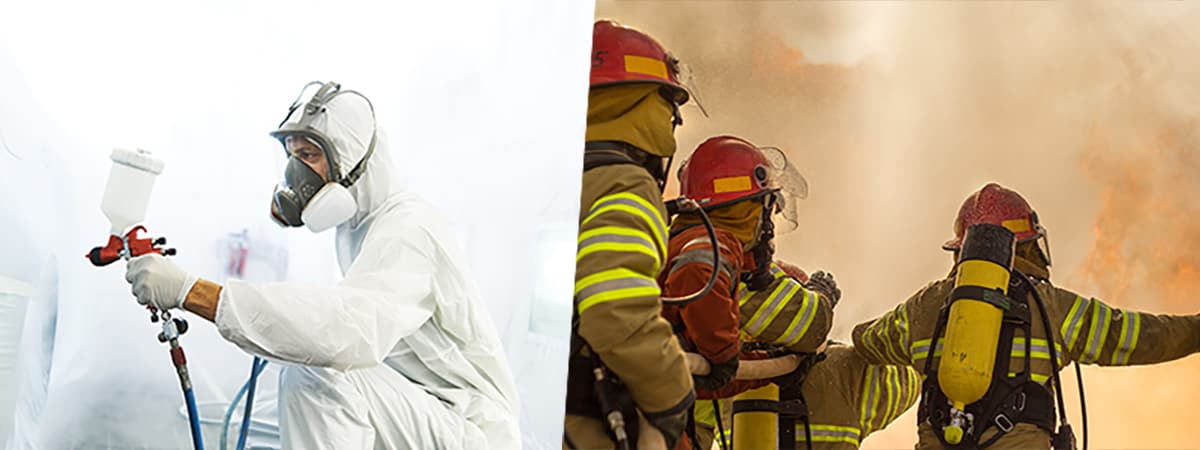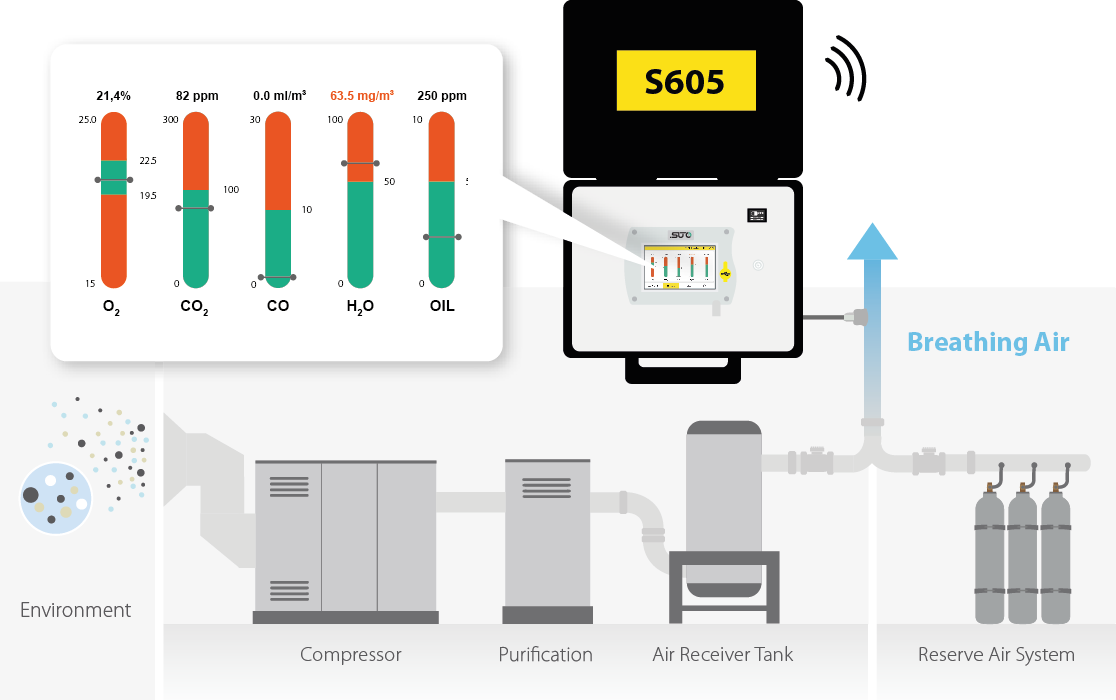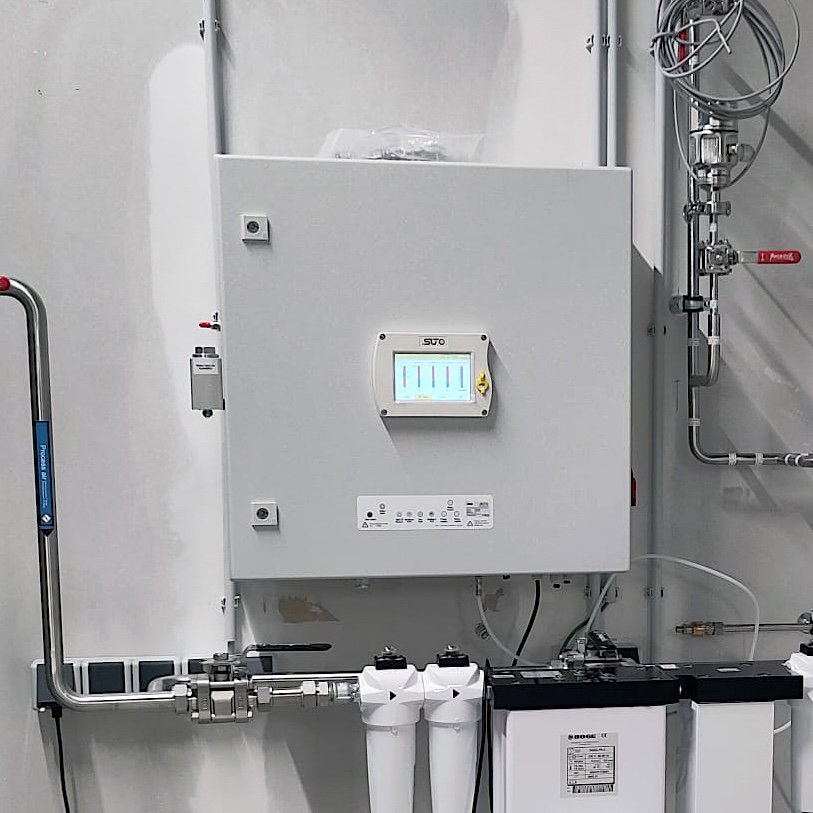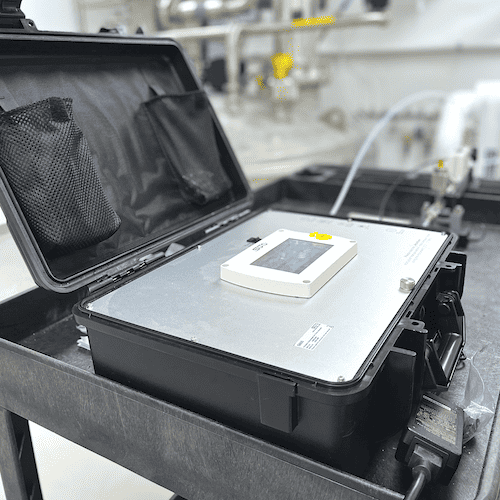
BREATHING AIR QUALITY TESTING
Compressed breathing air quality testing is essential to ensuring the safety of individuals relying on such air for breathing. Especially in environments like scuba diving, firefighting, and industrial settings, where breathing air quality standards need to be ensured.
The breathing air quality analyzers from SUTO iTEC are engineered to provide outstanding precision and dependability when assessing the compressed breathing air quality. By using cutting-edge sensor technology, these devices can identify and measure contaminants in the breathing air. Thanks to this precise measurement, the breathing air analyzers make sure that the breathing air either exceeds or meets the strict requirements established by industry guidelines and regulatory organizations.
The following are some important questions and answers about checking compressed breathing air quality:
Breathing Air Quality Testing: Frequently Asked Questions
Why is Compressed Breathing Air Quality Testing Important?
- Ensuring safety: Immediately identify and address air quality issues to ensure occupant safety.
- Compliance confidence: Meet and exceed regulatory requirements with real-time monitoring data.
- Preventive Action: Promptly address potential hazards and prevent health risks before they escalate.
What Contaminants Are Typically Tested in Compressed Breathing Air?
In response, typical contaminants include particulate parts, water vapor, oil, carbon monoxide (CO), and carbon dioxide (CO2). The health risks associated with each contaminant are unique, and their concentrations need to stay below reasonable bounds.





Which Standards Apply to the Quality of Compressed Breathing Air?
| Standard | EN 12021 (Europe) | GB/T 31975-2015 (China) | CFR (USA) | CSA (Canada) |
|---|---|---|---|---|
| O2 | 20-22 % | 19.5 - 23.5 % | 19.5 - 23.5% | 20 – 22 % |
| CO2 | 500 ppm | ≤ 1000 mL/m³ | 1,000 ppm | 500 ml/m3 |
| CO | 5 ppm | ≤ 10 mL/m³ | 10 ppm | 5 ml/m3 |
| H2O | PDP: < -11 °C 1) H2O: <35 mg/m3 2) H2O: <25 mg/m3 | ADP: ≤ -45.6 °C | -- | --- |
| VOC (Oil Vapor) | 0.5 mg/m3 | ≤ 5.0 mg/m³ (Oil mist and particle) | 5 mg/m3 | 1 mg/m3 |
| Odor | no | no | no | no |
What Steps Should Be Taken if Contaminants Exceed Acceptable Levels?
When the breathing air quality testing indicates that the levels of contaminants are higher than acceptable, corrective actions are required. This could entail changing filters, performing routine maintenance on the compressor system, and retesting the air until it satisfies the requirements. Affected people should also get medical help if they have come into contact with contaminated air.
Are There Portable Tools for Compressed Breathing Air Testing on-Site?
In order to test compressed breathing air quality in real time on-site, portable breathing air analyzers are available. With their ability to provide quick feedback on air quality, these devices are especially helpful in field applications.

Critical Applications Where Compressed Air Quality Testing Is Required
In environments where compressed air is used for respiratory protection, compressed air quality testing is critical. Key applications include:
Fire Departments and Rescue Services: Ensure SCBA air meets firefighter safety standards.
Diving operations: Testing scuba tank air for diver safety.
Industrial environments: Testing air quality for workers in confined spaces and welding operations.
Aviation industry: Ensuring air quality for emergency oxygen systems on aircraft.
Healthcare facilities: Checking the purity of compressed air in hyperbaric chambers and respiratory
Military and defense: Testing compressed air in ejection seats and personal protective equipment.
Laboratories and clean rooms: Maintaining the integrity of experiments with tested compressed air.
Manufacturing and chemical industries: Testing compressed air in clean room environments and chemical processing.
SUTO iTEC’s Breating Air Quality Testing Solutions
With the powerful combination of several sensor technologies, SUTO iTEC’s Breathing Air Quality Analyzers and testing equipment are capable of monitoring all relevant breathing air quality contaminants.
S606 Stationary Breathing Air Quality Monitor for 24/7 Quality Measurement
- Continuous monitoring: 24/7 monitoring for uninterrupted security.
- Customizable alerts: Set alerts for specific thresholds to ensure immediate response.
- Integration capabilities: Seamlessly integrate with your existing systems for comprehensive monitoring.
S605 Portable Breathing Air Quality Analyzer
- Real-time data: Get instant readings for key parameters.
- Portable: Carry the analyzer with you wherever you need on-site monitoring.
- User-friendly: Easy-to-use interface for hassle-free operation.

Operators of breathing air systems are required to fill respiratory air in line with international standards such as EN 12021 or CFSR 1910.134(d). Potential hazards due to impurities in the breathing air can have consequences which endanger health or which are even life-threatening.
Regular checks with the Breathing Air Analyzer S605 is an indispensable part for a safe operation.
State-of-the-art Measurement Technology
With the powerful combination of several sensor technologies, SUTO iTEC’s Breathing Air Quality Analyzers and testing equipment are capable of monitoring all relevant breathing air quality contaminants.

1. Oxygen Measurement (O2)
For safety reasons, it is recommended to measure the oxygen level in the breathing air. The optical oxygen sensor monitors the O2 content and indicates deviations from the standard concentration.

2. Carbon Dioxide Measurement (CO2)
The intake air may also be exposed to an increased concentration of carbon dioxide. Filter material used in compressed air can adsorb, but also release CO2. The gas is measured by the NDIR sensor to avoid extreme concentrations above 1000 ppm.

3. Carbon Monoxide Measurement (CO)
The compressor intake air may be contaminated with CO due to nearby combustion engines or heating systems. Carbon monoxide is a toxic and life-threatening gas that will be monitored accurately by an electrochemical sensor.

4. Humidity Measurement (H2O)
High humidity can cause corrosion and, in severe cases, lead to bursting air containers. In a cold environment, it can freeze and block the air supply. The integrated dew point sensor is crucial to checking the proper water removal of the dryers and filters.

5. Oil Vapor Measurement
Atmospheric oil vapor contained in industrial air environments can get into the system through the compressor or intake. Compressed into the breathing air, the oil contaminants can cause health issues. The state-of-the-art sensor technology detects the oil contaminants immediately.

6. Pressure Measurement
The pressure sensor provides additional pressure data about the compressed air system using state of the art sensor technology.
The measurement technology used at a glance
| Contaminant / Parameter | Accuracy | Measuring range | Resolution | Sensor |
|---|---|---|---|---|
| Oxygen O2 | ± 1 % of reading ± 0.05 % | 0 … 25% | 0.1 % | Optical oxygen senor |
| Carbon Dioxide CO2 | ± 1 % of reading ± 25 ppm | 0 … 1000 ppm | 1ppm | NDIR sensor |
| Carbon Monoxide CO | ± 5 % of reading ± 1 ppm | 0 … 20 ppm | 0.1 ppm | Electrochemical sensor |
| Humidity H2O | ±1 °C Td (0… 20 °C Td) / ±2 °C Td (-70... 0 °C Td) / ±3 °C Td (-100… -70 °C Td) | -100 ... +20 °C Td / 0 ... 17458.6 mg/m³ | 0.1 mg/m3 | QCM + Polymer |
| Oil Vapor | 5% of reading ± 0.003 mg/m³ | 0.001 ... 5.000 mg/m³ (Based on 1000 hPa(a), 20 °C,0% relative humidity) | 0.001 mg/m³ | Photo ionization detector |
| Oil Mist and Particle | 15% of reading ± 0.1 mg/m³ | 0.001 ... 5.000 mg/m³ (Based on 1000 hPa(a), 20 °C,0% relative humidity) | 0.1 mg/m³ | Oil mist and particle sensor |
| Pressure | 0.5% FS | 0... 16 bar(g) | 0.01 bar | Piezzo resistive pressure sensor |
Take Control of Your Breathing Air Quality!
When it comes to the air you breathe, don’t compromise. Choose SUTO iTEC’s on-site air quality monitoring instruments and raise your safety standards. Experience the difference of real-time monitoring—breathe safely with SUTO iTEC.
-
Real-time monitoring solutions: We offer real-time monitoring solutions with the S600 Portable Breathing Air Analyzer and the S601 Stationary Breathing Air Quality Monitor. Get instant, accurate insight into your breathing air quality.
-
Unmatched accuracy: Our instruments have industry-leading accuracy, precisely detecting pollutants, contaminants and oxygen levels to ensure your breathing air meets the highest standards.
-
On-site assurance: Our on-site instruments give you the ability to monitor air quality where it matters. No delays, no guessing—just real-time data for instant action.




